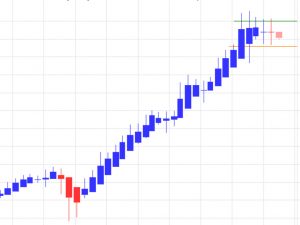
The IMF, based on the principle of a credit union, whereby members could withdraw more than their original gold quotas, was established to provide relief for temporary current account shortfalls. The new economic system required an accepted vehicle for investment, trade, and payments. Unlike national economies, however, the international economy lacks a central government that can issue currency and manage its use.
- It was the n-1th currency in the system of n currencies (Mundell 1969).
- If anything, Bretton Woods was a return to a time devoid of increased governmental intervention in economies and currency systems.
- Throughout the 1950s Washington sustained a balance of payments deficit to finance loans, aid, and troops for allied regimes.
- Although the national experts disagreed to some degree on the specific implementation of this system, all agreed on the need for tight controls.
By the mid-1960s, the E.E.C. and Japan had become international economic powers in their own right. With total reserves exceeding those of the U.S., higher levels of growth and trade, and per capita income approaching that of the U.S., Europe and Japan were narrowing the gap between themselves and the United States. Another aspect of the internationalization of banking has been the emergence of international banking consortia. Since 1964 various banks had formed international syndicates, and by 1971 over three-quarters of the world’s largest banks had become shareholders in such syndicates.
What is the Bretton Woods Agreement?
The agreement was reached by 730 delegates, who were the representatives of the 44 allied nations that attended the summit. The delegates, within the agreement, used the gold standard to create a fixed currency exchange rate. (i) The Bretton Woods system ushered in an era of extraordinary trade and economic growth for Western industrial countries and Japan. (ii) It gave a major boost to international trade, which increased at an annual rate of over 8% between 1950 and 1970, and incomes by nearly 5%. (iii) The grow-h was similarly fairly consistent, with few significant changes. (iv) The system also kept unemployment low, with most industrial countries averaging less than 5%.

In addition, because the only available market for IBRD bonds was the conservative Wall Street banking market, the IBRD was forced to adopt a conservative bretton woods agreement class 10 lending policy, granting loans only when repayment was assured. Given these problems, by 1947 the IMF and the IBRD themselves were admitting that they could not deal with the international monetary system’s economic problems. After the Bretton Woods system ended in 1973, most countries allowed their currencies to float, but this situation soon changed. To ensure economic stability and political peace, states agreed to cooperate to closely regulate the production of their currencies to maintain fixed exchange rates between countries with the aim of more easily facilitating international trade. This was the foundation of the U.S. vision of postwar world free trade, which also involved lowering tariffs and, among other things, maintaining a balance of trade via fixed exchange rates that would be favorable to the capitalist system. Because the Bretton Woods parities, which were declared in the 1940s, had undervalued the price of gold, gold production would be insufficient to provide the resources to finance the growth of global trade.
What do you mean by Bretton Woods agreement?
Without price controls, gold quickly shot up to $120 per ounce in the free market, ending the Bretton Woods system. At the time of the Bretton Woods agreement, the World Bank was set up to lend to the European countries devastated by World War II. The purpose of the World Bank changed to loaning money to economic development projects in emerging market countries. Still, there were several attempts by representatives, financial leaders, and governmental bodies to revive the system and keep the currency exchange rate fixed. However, by 1973, nearly all major currencies had begun to float relatively toward one another, and the entire system eventually collapsed. Yet Bretton Woods was short-lived, undone by both flaws in its basic structure and the unwillingness of key sovereign members to follow its rules.
Why did the World Bank and IMF come under fire from Guterres? – The Daily Star
Why did the World Bank and IMF come under fire from Guterres?.
Posted: Sun, 09 Jul 2023 03:00:40 GMT [source]
In the event of structural disequilibria, it expected that there would be national solutions, for example, an adjustment in the value of the currency or an improvement by other means of a country’s competitive position. The IMF was left with few means, however, to encourage such national solutions. It created a run on the U.S. gold reserves at Fort Knox as people redeemed their quickly devaluing dollars for gold.
What is meant by the Bretton Woods Agreement?
Moreover, all other currencies in the system were then pegged to the U.S. dollar’s value. The exchange rate applied at the time set the price of gold at $35 an ounce. Q.18. G-77 can be seen as a reaction to the activities of the Bretton Woods Twins. (i) The Bretton Woods Twins – erstwhile colonial powers dominated the IMF and World Bank.
- Most of these indentured labourers migrated in hope for a bright future or to escape poverty or oppression in their home village, but they were exploited by the recruiting agent and by the employer.
- The absence of a high degree of economic collaboration among the leading nations will … inevitably result in economic warfare that will be but the prelude and instigator of military warfare on an even vaster scale.
- (iii) The grow-h was similarly fairly consistent, with few significant changes.
- Only the United States contribution of $570 million was actually available for IBRD lending.
Secretary of the Treasury, and John Maynard Keynes, an advisor to the British Treasury, independently drafted plans for organizations that would provide financial assistance to countries experiencing short-term deficits in their balance of payments. This assistance would help ensure that such countries would not adopt protectionist or predatory trade and monetary policies to improve their balance of payments position. Both plans envisioned a world of fixed exchange rates, believed to be more conducive to the expansion of world trade than floating exchange rates. This arrangement came to be referred to as the Pax Americana, in analogy to the Pax Britannica of the late 19th century and the Pax Romana of the first. The IBRD had an authorized capitalization of $10 billion and was expected to make loans of its own funds to underwrite private loans and to issue securities to raise new funds to make possible a speedy postwar recovery. The IBRD was to be a specialized agency of the United Nations, charged with making loans for economic development purposes.
Significance of the Bretton Woods Agreement
Meeting in December 1971 at the Smithsonian Institution in Washington, D.C., the Group of Ten signed the Smithsonian Agreement. The U.S. pledged to peg the dollar at $38/ounce with 2.25% trading bands, and other countries agreed to appreciate their currencies versus the dollar. The group also planned to balance the world financial system using special drawing rights alone.
New Kids in The Block: BRICS, MINT, and Now D-8 – Modern Diplomacy
New Kids in The Block: BRICS, MINT, and Now D-8.
Posted: Fri, 04 Aug 2023 11:05:05 GMT [source]
The Articles represented a compromise between the American plan of Harry Dexter White and the British plan of John Maynard Keynes. The compromise created an adjustable peg system based on the US dollar convertible into gold at $35 per ounce along with capital controls. The compromise gave members both exchange rate stability and the independence for their monetary authorities to maintain full employment.
The agreement created the World Bank and the International Monetary Fund (IMF), U.S.-backed organizations that would monitor the new system. Despite falling apart, the Bretton Woods summit and agreement are responsible for a number of notably important aspects in the financial world. The summit was also looking for policies and regulations that would maximize the potential benefits and profits that could be derived from the global trading system. What resulted from the conference were the Bretton Woods Agreement and the Bretton Woods System. The decision to suspend gold convertibility by President Richard Nixon on 15 August 1971 was triggered by French and British intentions to convert dollars into gold in early August. The US decision to suspend gold convertibility ended a key aspect of the Bretton Woods system.
The Bretton Woods Agreement was negotiated in July 1944 by delegates from 44 countries at the United Nations Monetary and Financial Conference held in Bretton Woods, New Hampshire. We successfully provide students with intensive courses by India’s top faculties and personal mentors. PW strives to make the learning experience comprehensive and accessible for students of all sections of society.
Further, a sizable share of the world’s known gold reserves were located in the Soviet Union, which would later emerge as a Cold War rival to the United States and Western Europe. Those at Bretton Woods envisioned an international monetary system that would ensure exchange rate stability, prevent competitive devaluations, and promote economic growth. Although all participants agreed on the goals of the new system, plans to implement them differed. To reach a collective agreement was an enormous international undertaking. Preparation began more than two years before the conference, and financial experts held countless bilateral and multilateral meetings to arrive at a common approach. In the 19th and early 20th centuries gold played a key role in international monetary transactions.
Bretton Woods Agreement
The Atlantic Charter affirmed the right of all nations to equal access to trade and raw materials. The Bretton Woods Agreement was a 1944 meeting of the Allied nations, in which the nations agreed to peg their currencies to the dollar while the dollar was pegged to gold. For example, they wouldn’t lower their currencies strictly to increase trade. For example, they could take action if foreign direct investment began to destabilize their economies.

(ii) While Britain was concerned with war, Japan and India were developing their industries. As a result, Britain now had to compete with these countries, particularly Japan. (iv) The conflict had resulted in a significant increase in demand, what is meant by bretton woods agreement class 10 output, prices, and employment. When the wartime boom ended, production fell, employment fell, and unemployment rose. (v) During the conflict, the inhabitants of British colonies were obliged to oppose them due to economic hardship.